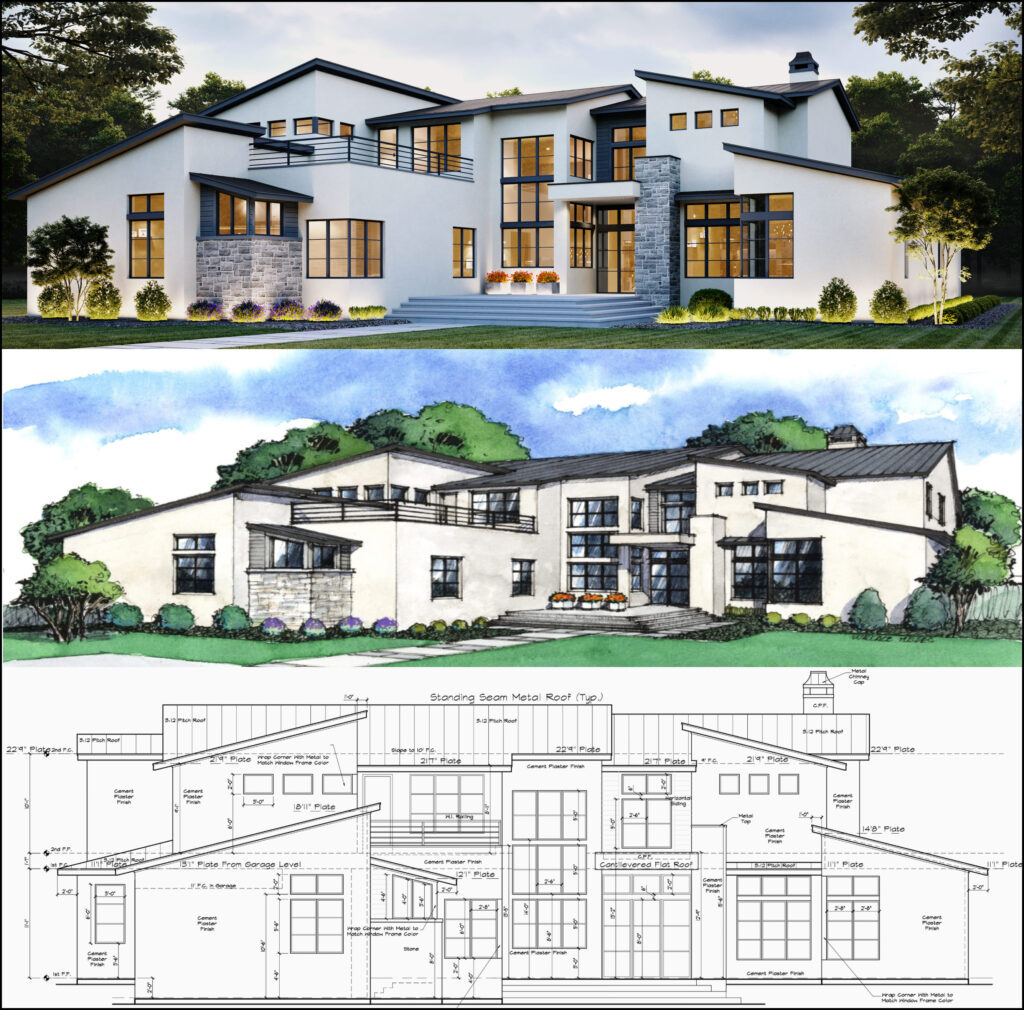How CDA Architects Incorporate Eco-Friendly Practices in Architectural Projects
How CDA Architects Incorporate Eco-Friendly Practices in Architectural Projects
Blog Article
The Crucial Function of an Architect in Shaping Lasting Urban Environments for Future Generations
The role of a designer in crafting sustainable urban environments is significantly pivotal in responding to the difficulties of environment adjustment and urbanization. By seamlessly incorporating eco-friendly principles right into their layouts, engineers not only improve the aesthetic and practical top quality of city areas but likewise address pressing issues such as energy efficiency and social equity.
Comprehending Lasting Urban Style
Lasting city design incorporates environmental principles with city planning to create settings that are not just habitable however also resistant. This technique emphasizes the value of integrating all-natural systems into the metropolitan fabric, making certain that development fulfills the needs of today without jeopardizing the capacity of future generations to fulfill their own demands. Crucial element of sustainable metropolitan design consist of efficient land usage, the promo of biodiversity, and the integration of environment-friendly spaces, every one of which contribute to improved top quality of life for locals.
In addition, sustainable city design prioritizes the decrease of the metropolitan warmth island effect, enhanced air quality, and reliable stormwater monitoring. It encourages using renewable energies and energy-efficient building methods, which substantially reduced carbon footprints. Moreover, lasting city layout cultivates social equity by developing available public areas and advertising mixed-use growths that deal with varied populaces.
With thoughtful planning and ingenious style approaches, lasting urban environments can enhance area resilience versus climate change while fostering economic development. This holistic strategy not only addresses immediate urban challenges yet additionally prepares for healthier, more sustainable cities for generations ahead.
Trick Duties of Designers
Designers play an essential function in shaping sustainable city settings by converting style principles into tangible frameworks and rooms. Their obligations include a variety of activities that contribute to the total success of city style projects.
Firstly, designers carry out complete site analyses to recognize the environmental, social, and social context of their tasks. This foundational knowledge educates their design choices, guaranteeing that buildings integrate with their surroundings. They also participate in collaborative procedures with stakeholders, including city planners, designers, and the community, cultivating an inclusive strategy to urban development.
Furthermore, architects are charged with creating layouts that enhance power efficiency, source conservation, and performance. They must abide by regional zoning laws, developing codes, and sustainability certifications, ensuring conformity while pressing the boundaries of technology.
Moreover, designers are in charge of taking care of the design process, collaborating with various experts throughout the construction stage to make certain that the vision is realized precisely (cda architects). Inevitably, their role is not only regarding visual appeals; it has to do with developing resilient, adaptive rooms that enhance the high quality of life for present and future generations, laying the foundation for lasting urban living
Cutting-edge Products and Techniques

In addition, developments in technology have actually caused the advancement of high-performance products, such as shielded concrete types (ICFs) and photovoltaic glass, which add to energy conservation and harness renewable resource. Methods such as passive solar layout and green roofings additionally exhibit exactly how style can harmonize with natural systems, minimizing dependence on their explanation fabricated heating and cooling.
Moreover, the integration of smart products, which adjust to ecological changes, offers appealing methods for enhancing building efficiency. These materials can react to temperature level fluctuations or dampness levels, enhancing comfort and sustainability.
Eventually, the calculated option and application of ingenious products and strategies encourage designers to develop metropolitan rooms that are not only practical and visually pleasing yet also durable and eco responsible, making sure a sustainable future for generations ahead. cda architects.
Area Engagement and Partnership
The success of cutting-edge products and methods more information in sustainable urban style is dramatically boosted by energetic neighborhood engagement and collaboration. Engineers need to acknowledge that the constructed setting exceptionally affects the lives of local homeowners, making it necessary to entail them in the layout process. Involving the neighborhood fosters a feeling of possession and liability, making sure that developments not only meet visual and functional needs yet likewise reflect the worths and aspirations of those that occupy them.

Successful area involvement additionally aids in prioritizing social equity within urban development. By considering the voices of marginalized populations, designers can produce areas that are comprehensive and fair. By doing this, area engagement and partnership end up being essential to accomplishing truly sustainable metropolitan environments that serve the demands of existing and future generations.
Future Fads in Lasting Style
An arising emphasis on adaptive reuse and circular economy concepts is he has a good point readied to redefine the landscape of lasting style. As cities come to grips with boosting population densities and ecological difficulties, designers are progressively turning to approaches that maximize existing frameworks as opposed to seeking new builds. This strategy not just preserves cultural heritage yet also considerably reduces source usage and waste.
Furthermore, advancements in modern technology are forming future trends in lasting design. The integration of clever materials and building systems allows for real-time power administration, enhancing performance and decreasing carbon impacts. Developments such as green roof coverings, living walls, and energy-generating exteriors are ending up being standard methods, additionally promoting eco-friendly balance within city environments.
In addition, a shift in the direction of biophilic style is gaining traction, emphasizing the link between nature and human health. By including natural environments, designers create spaces that cultivate psychological wellness while promoting biodiversity.
Verdict
To conclude, engineers are critical in advancing sustainable metropolitan settings through their experience in style, ingenious materials, and area engagement. By prioritizing energy performance and resource conservation, these experts add to the creation of durable metropolitan areas that fulfill the requirements of present and future generations. The assimilation of ecological concepts not just improves livability however likewise cultivates social equity, ensuring developments resonate with the values and desires of the areas they offer.
Report this page